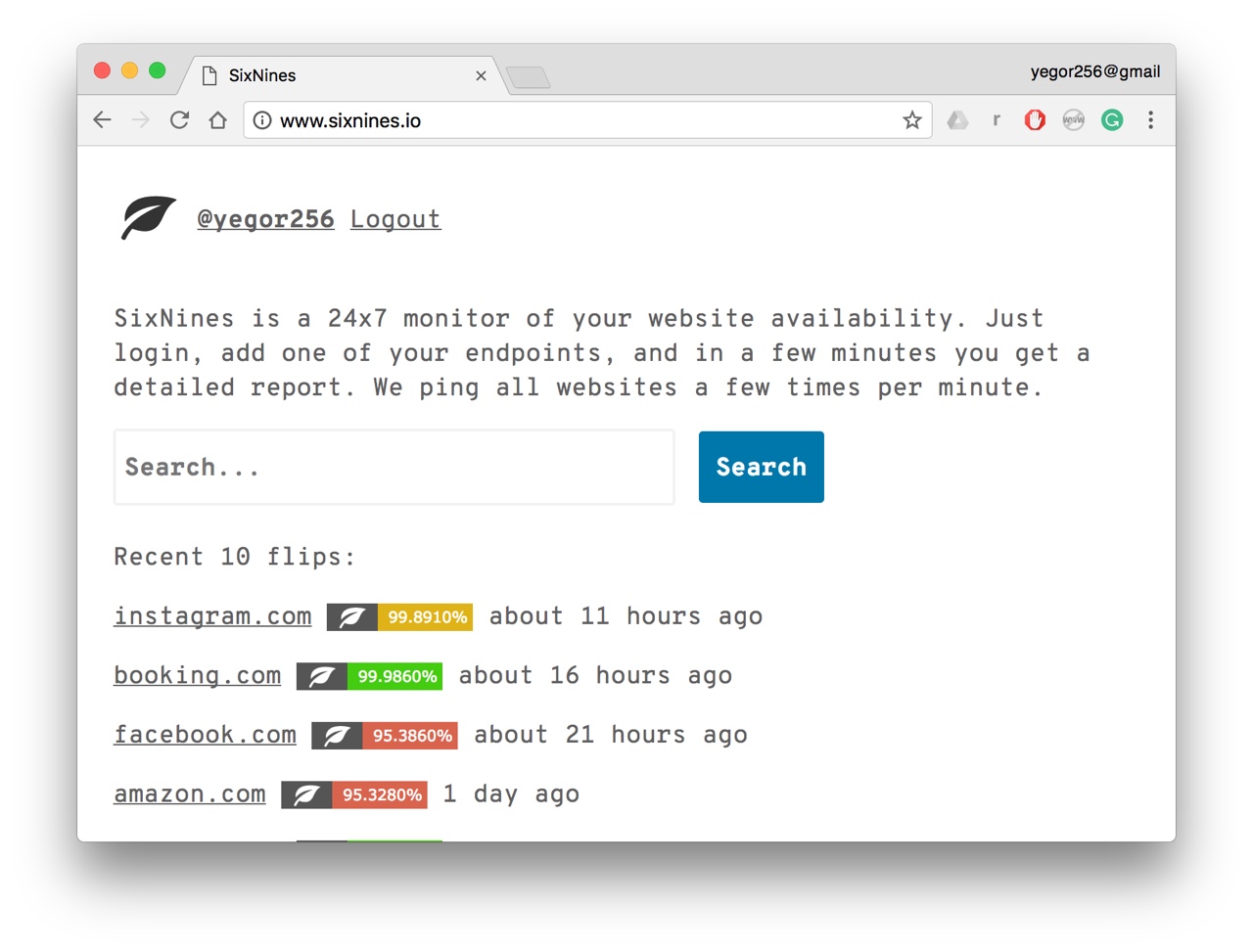
Availability is a metric that demonstrates how often your website is available to its users. Technically, it’s a ratio between the number of successful attempts to open the website and the number of failed ones. If one out of a hundred attempts failed, we can say the availability is 99 percent. High-quality websites aim for so-called “six nines” high availability, so named by the number of 9s in the ratio: 99.9999 percent. We created a service that helps you measure this metric and demonstrate its value to your users: SixNines.

All you need to do is log in using your GitHub account and register your URI, which SixNines will validate. This operation will cost you $4.95 (processed by Stripe). It’s a once-in-a-lifetime fee (if you don’t have any money, email us and we’ll figure something out). As soon as your URI is in the system, we will monitor it forever.
The key problem with the availability metric is that it takes a lot of time in order to really guarantee a figure of “six nines.” Indeed, look at the ratio: 99.9999 percent means that only one attempt out of a million fails (provided we make them regularly with equal intervals). In order to ping your website at least a million times, we would have to work for 694 days and ping every minute. This would take more than two years.
Only after those two years of 24-7 work would we be able to prove that your website is of “high availability” and the value of the metric really is equal to 99.9999 percent (you would have all kinds of reasons to be proud of it).
You can see some big websites being checked by SixNines already:
And this is my blog’s availability (it’s hosted on GitHub Pages):
As you see, their numbers are far from “six nines” because we just started to measure them. In two years, we will see what their real availability is.
SixNines is written in Ruby and is open source, hosted in GitHub. Don’t hesitate to contribute.
